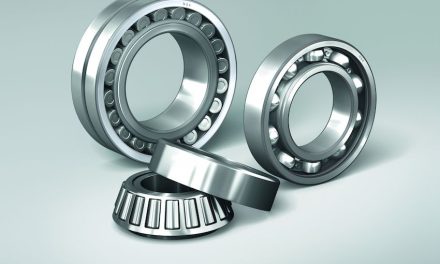 Like many processes, injection moulding (IM) can benefit hugely from automation involving robotics. While the move towards offshoring work in the early 2000s impacted its adoption across Europe, Sumitomo (SHI) Demag and its IM robotics specialist and partner Sepro Robotique are reporting a change in attitude and reversal in this trend, with a growing number embracing automation to stay ahead of their competition.
Like many processes, injection moulding (IM) can benefit hugely from automation involving robotics. While the move towards offshoring work in the early 2000s impacted its adoption across Europe, Sumitomo (SHI) Demag and its IM robotics specialist and partner Sepro Robotique are reporting a change in attitude and reversal in this trend, with a growing number embracing automation to stay ahead of their competition.
For the French-based Sepro Robotique, 2013 was the best year for UK sales since 2000 and a record year for the wider group. Likewise, Sumitomo has seen a massive increase in interest for automating processes in the plastics sector – around 20% of IM machines it sold last year had some sort of robotic feature. “Many businesses now appreciate that, wherever production is located, there is a cost to getting higher quality products,” said Sumitomo (SHI) Demag’s technical sales manager, Dave Raine. “On the flipside, UK moulding companies have needed to reduce costs and ensure competitiveness. Including a robot in an IM machine can typically amount to an additional £25,000, but what you get is available 24-hours a day. Those who make that investment will often see payback in less than a year.”
The simplest robot applications involve sequencing with the moulding cycle to remove finished parts from the machine and placing them on a table. Another common task involves stripping sprues and waste from around the mould and placing them in a granulator for recycling.
In-mould labelling (IML) is another prime area for automation, and in recent years European and UK adoption in packaging applications has really taken off. Speed is all-important in this role, and Sepro offers a series of high-speed side-entry robots, incorporating label dispensing and placing technology. IML offers clear operational efficiencies and improved graphics to maximise the on-shelf impact of consumer brands. What’s more, IML is increasingly being used to double up pack barrier layers, which extends the shelf life of food products.
In-mould insertion is also common practice when creating automotive parts, highlighted Paul Goodhew, UK managing director of Sepro. In particular fabric insertion, which is a major feature of many IM installations. Other examples in motor industry applications involve the exposure of moulded bumpers to a gas flame in preparation for downstream spraying.
Vision can be added to IM robotics to monitor quality and create a traceability record. Sumitomo is currently building a cell whereby the master computer connects to the robot, a tiny camera inside the part, and the laser marking station. If the software detects a defect, the part is automatically placed to one side for manual inspection.
“This type of integrated system goes well beyond simply automating a manual process,” Dave enthused. “It’s actually the only way of guaranteeing repeatability and quality to the levels required by the customer.”
For hygiene sensitive markets, such as medical and healthcare, it is possible to attach a robot to the frame of the IM machine, enabling manufacturers to automate functions like handling and packing within a compact and enclosed cleanroom-standard cell. “Once you have the filter and laminar airflow, the robot is sitting in a cell that’s cleaner than the average operating theatre,” exclaimed Dave.
Tackling the topic of cost, Dave claimed that around one-third of the installation typically comes down to integrator’s expertise and making sure the robot fits perfectly with the wider IM operation and common standards endorsed by the European Plastics and Rubber Machinery Association (EUROMAP). “Most of the innovation today is happening in software and programming, making it just as easy to programme a highly- flexible 6-axis articulated arm robot as a 3-axis Cartesian-style system,” he said.
All these improvements and better tailoring to specific end uses have made it easier for IM customers to justify investment in automation. “Over the past 20 years, size-for-size, the price of a 3-axis system has stayed effectively the same. In some cases, it could be 10% or less,” added Paul at Sepro. Factoring in inflation, this represents a dramatic price reduction in real terms. “What’s more, greater affordability of 6-axis robots means that the cost differential between 6-axis and 3-axis options has also been eroded.”
Speed, yield, repeatability, reliability, multi-tasking and long-term cost saving are all reasons why end users might opt for a robotic injection moulding solution. The latest robots are easier to integrate, and today’s improved designs often have fewer parts, making them easier to maintain. When considering a move to automation, plastics manufacturers should look to work with a system integrator who has access to a wide range of options, including entry economical level solutions, as well as bespoke custom designs for complex handling applications.


